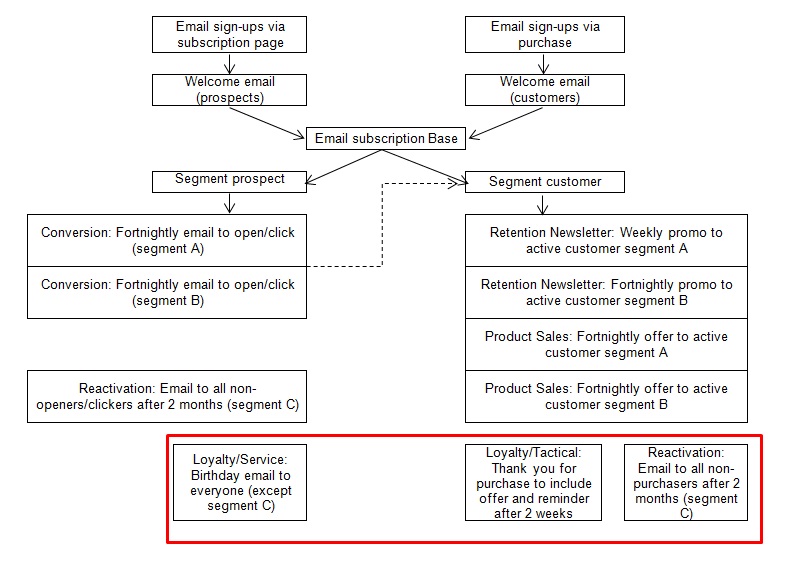In a previous post we took a look at a hypothetical customer lifecycle and mapped 4 stages that the customer (generally speaking) could move through. Unfortunately for email marketers however, the customer journey is rarely quite as linear as that!
With this in mind, your automation campaigns need to be able to handle different levels of complexity, and the diverging customer engagement paths matched with the appropriate content.
Let's take an example.
Suppose that you have one email subscriber base. The source of these addresses could be traced back to either prospects, who signed up via your subscription page, or alternatively customers, who signed up based on a purchase. Both will get (the same) welcome mails. However the subsequent messaging will have to change:
- Prospects want information that will guide them towards a purchase - so you need a conversion-focused mail with the appropriate content and messaging
- Customers want information that will reinforce their decision to buy, and possibly communicate the benefits of related products. In this case you will need a retention-focused mail, with further information on the benefits of buying more
Below is an example* of how an automation campaign can grow increasingly complex should you include customers and prospects and basic segmentation methodology.

The conclusion we can reach here is simply this: the pre-planning phase is by far the most critical and time-consuming aspect of email marketing automation. However, even if you decide not to implement an automated programme, by merely going through the exploratory process of defining "who are my customers and who are my prospects", you will go a long way towards adding significant ROI to your email marketing list.
*Source: eCircle

